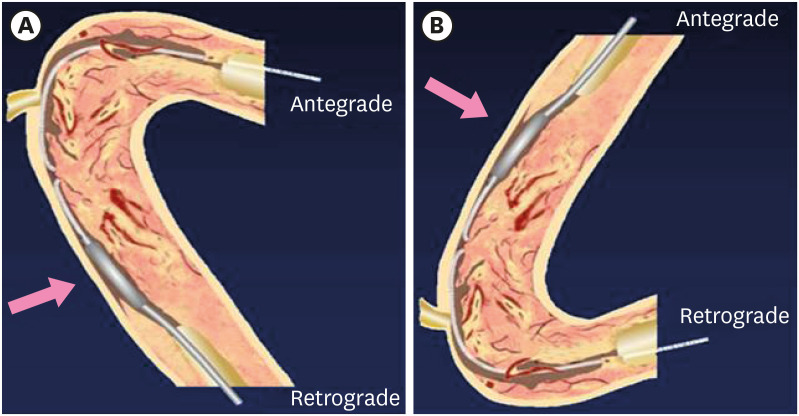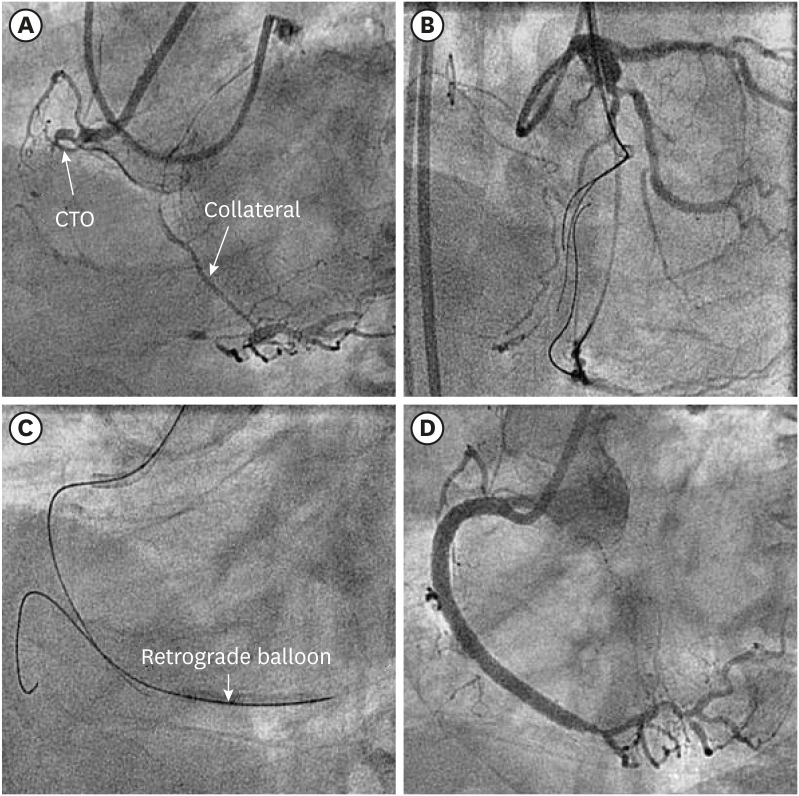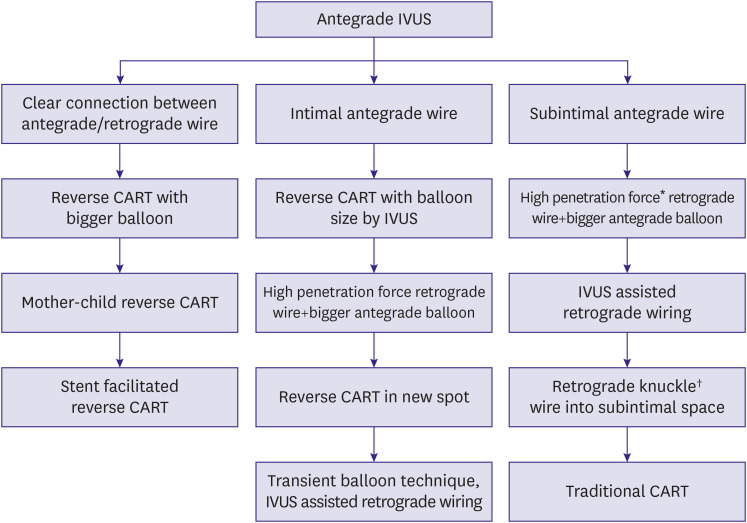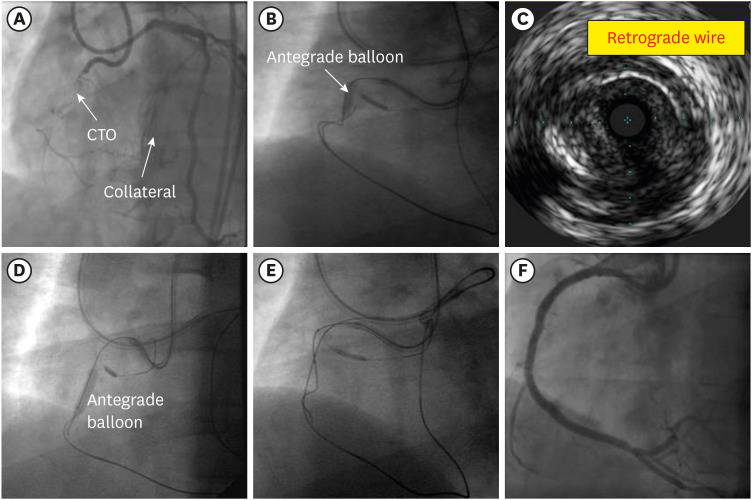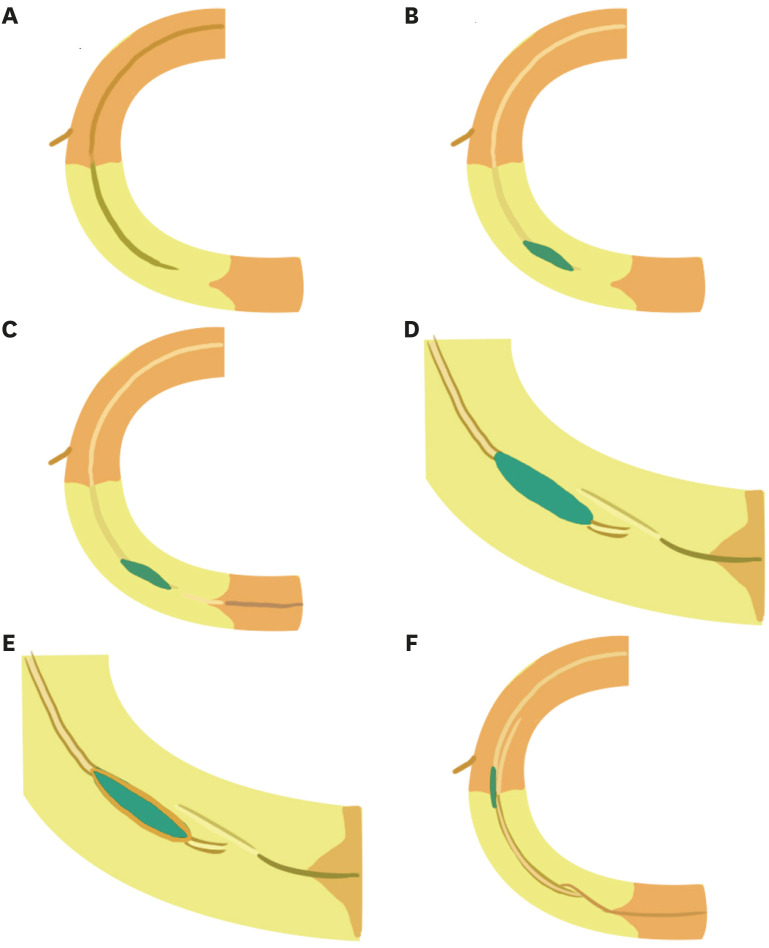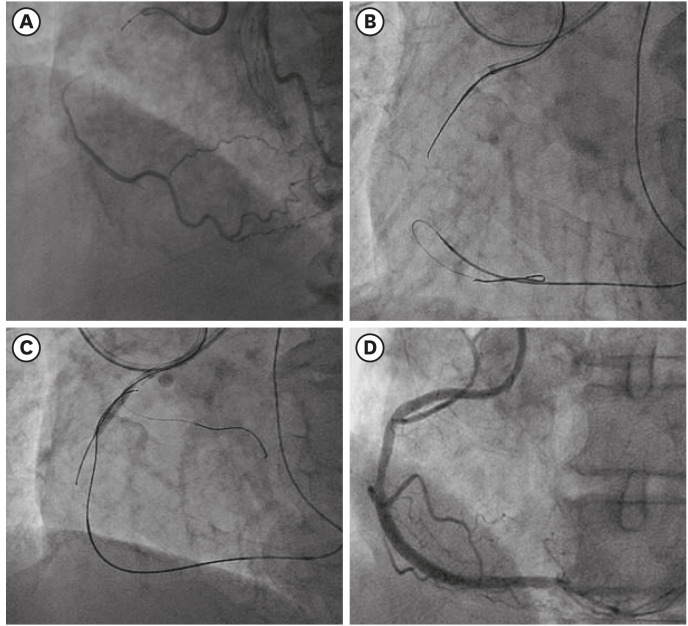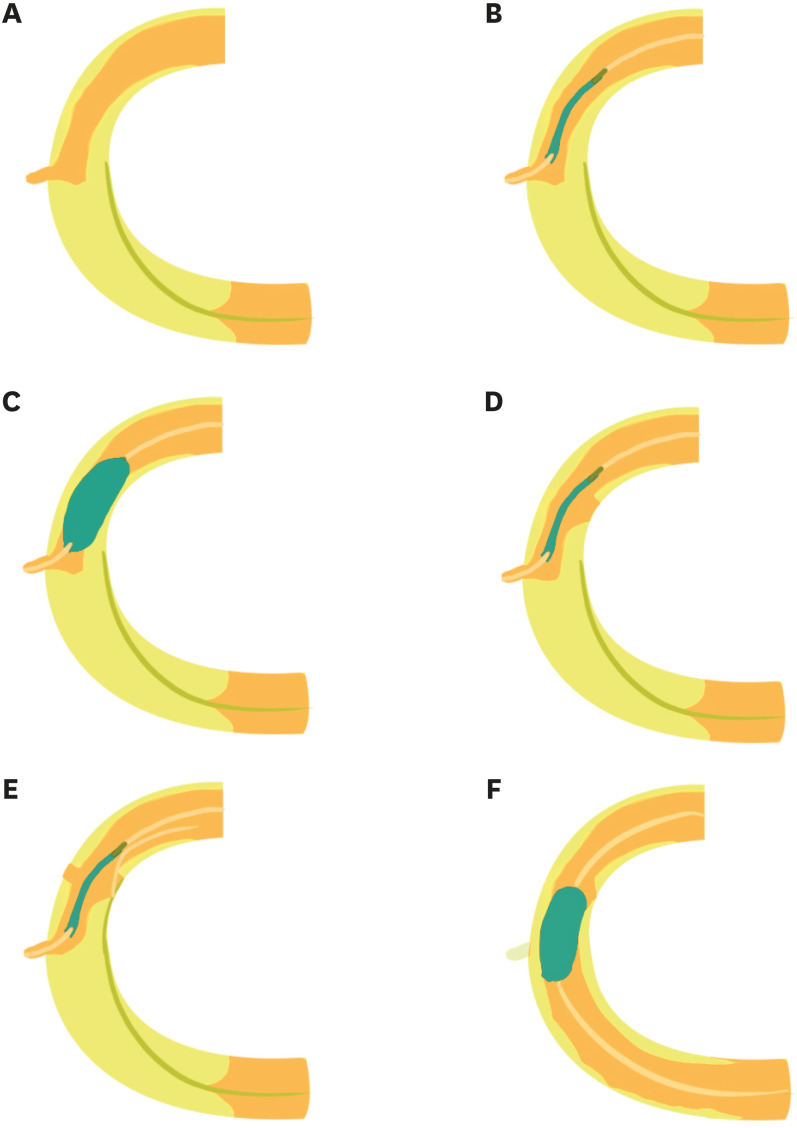Korean Circ J.
2020 Oct;50(10):867-879. 10.4070/kcj.2020.0156.
Iteration of Reverse Controlled Antegrade and Retrograde Tracking for Coronary Chronic Total Occlusion Intervention: a Current Appraisal
- Affiliations
-
- 1Department of Cardiology, Aster Hospital, Dubai, UAE
- KMID: 2507004
- DOI: http://doi.org/10.4070/kcj.2020.0156
Abstract
- Coronary chronic total occlusion (CTO) remains one of the most challenging subsets for percutaneous coronary intervention (PCI). The retrograde recanalization is one of the most significant amendments of the technique that remains critical to improved success of CTO PCI. Currently the reverse controlled antegrade and retrograde tracking (CART) is the most dominant retrograde technique. With emergence of new equipment and important iterations, this approach has become safer, faster and more successful. In this review, the author proposes the iteration and standardization of this technique which would further facilitates its adoption with more efficacy and safety.
Keyword
Figure
Cited by 1 articles
-
Before Coronary CTO PCI: Burden or Location?
Woong Gil Choi
Korean Circ J. 2022;52(2):162-165. doi: 10.4070/kcj.2021.0393.
Reference
-
1. Karmpaliotis D, Michael TT, Brilakis ES, et al. Retrograde coronary chronic total occlusion revascularization: procedural and in-hospital outcomes from a multicenter registry in the United States. JACC Cardiovasc Interv. 2012; 5:1273–1279. PMID: 23257376.2. Brilakis ES, Grantham JA, Thompson CA, et al. The retrograde approach to coronary artery chronic total occlusions: a practical approach. Catheter Cardiovasc Interv. 2012; 79:3–19. PMID: 22215566.3. Dash D. Deja Vu of retrograde recanalization of coronary chronic total occlusion: A tale of a journey from Japan to India. Indian Heart J. 2016; 68:584–585. PMID: 27543488.
Article4. Dash D. Retrograde coronary chronic total occlusion intervention using a novel reverse controlled antegrade and retrograde subintimal tracking. J Interv Cardiol. 2016; 29:70–74. PMID: 26728800.
Article5. Hoye A, van Domburg RT, Sonnenschein K, Serruys PW. Percutaneous coronary intervention for chronic total occlusions: the Thoraxcenter experience 1992–2002. Eur Heart J. 2005; 26:2630–2636. PMID: 16183693.
Article6. Ruocco NA Jr, Ring ME, Holubkov R, Jacobs AK, Detre KM, Faxon DP. Results of coronary angioplasty of chronic total occlusions (the National Heart, Lung, and Blood Institute 1985–1986 Percutaneous Transluminal Angioplasty Registry). Am J Cardiol. 1992; 69:69–76. PMID: 1729870.
Article7. Surmely JF, Tsuchikane E, Katoh O, et al. New concept for CTO recanalization using controlled antegrade and retrograde subintimal tracking: the CART technique. J Invasive Cardiol. 2006; 18:334–338. PMID: 16816442.8. Dash D. A step-by-step guide to mastering retrograde coronary chronic total occlusion intervention in 2018: the author's perspective. Indian Heart J. 2018; 70 Suppl 3:S446–55. PMID: 30595306.
Article9. Dash D. Retrograde coronary total occlusion intervention. Curr Cardiol Rev. 2015; 11:291–298. PMID: 26354513.10. Nguyen TN, Hu D, Chen SL, et al. Practical Handbook of Advanced Interventional Cardiology. 4th ed. Chichester: Wily-Blackwell;2013.11. Tsuchikane E, Katoh O, Kimura M, Nasu K, Kinoshita Y, Suzuki T. The first clinical experience with a novel catheter for collateral channel tracking in retrograde approach for chronic coronary total occlusions. JACC Cardiovasc Interv. 2010; 3:165–171. PMID: 20170873.
Article12. Matsuno S, Tsuchikane E, Harding SA, et al. Overview and proposed terminology for the reverse controlled antegrade and retrograde tracking (reverse CART) techniques. EuroIntervention. 2018; 14:94–101. PMID: 29360064.
Article13. Dash D, Li L. Intravascular ultrasound guided percutaneous coronary intervention for chronic total occlusion. Curr Cardiol Rev. 2015; 11:323–317. PMID: 26354514.
Article14. Rathore S, Katoh O, Tuschikane E, Oida A, Suzuki T, Takase S. A novel modification of the retrograde approach for the recanalization of chronic total occlusion of the coronary arteries intravascular ultrasound-guided reverse controlled antegrade and retrograde tracking. JACC Cardiovasc Interv. 2010; 3:155–164. PMID: 20170872.15. Dash D. Guidewire crossing techniques in coronary chronic total occlusion intervention: A to Z. Indian Heart J. 2016; 68:410–420. PMID: 27316507.
Article16. Fung R, Wu EB, Jim MH. Dislodged stent after stent reverse controlled antegrade and retrograde subintimal tracking (CART) - Is stent reverse CART a necessary tool or an unnecessary evil? J Cardiol Cases. 2017; 16:205–209. PMID: 30279836.
Article17. Dash D. Reverse controlled antegrade and retrograde subintimal tracking for chronic total occlusion intervention: my approach in 2017. SL Clin Exp Cardiol. 2017; 1:111.18. Wu EB, Chan WW, Yu CM. Antegrade balloon transit of retrograde wire to bail out dissected left main during retrograde chronic total occlusion intervention--a variant of the reverse CART technique. J Invasive Cardiol. 2009; 21:e113–e118. PMID: 19494417.19. Kim U, Seol SH, Kim DI, et al. Clinical outcomes and the risk factors of coronary artery aneurysms that developed after drug-eluting stent implantation. Circ J. 2011; 75:861–867. PMID: 21258162.
Article20. Hasegawa K, Tsuchikane E, Okamura A, et al. Incidence and impact on midterm outcome of intimal versus subintimal tracking with both antegrade and retrograde approaches in patients with successful recanalisation of chronic total occlusions: J-PROCTOR 2 study. EuroIntervention. 2017; 12:e1868–73. PMID: 27802928.
Article21. Dash D. “Putting it all together”: a global approach to chronic total occlusion revascularization. J Indian Coll Cardiol. 2016; 6:152–157.
Article22. Wu BE, Tsuchikane E, Lo S, et al. Retrograde algorithm for chronic total occlusion from the Asia Pacific Chronic Total Occlusion Club. Asian Interv. 2018; 4:98–107.
- Full Text Links
- Actions
-
Cited
- CITED
-
- Close
- Share
- Similar articles
-
- Reverse Controlled Antegrade and Retrograde Subintimal Tracking in Chronic Total Occlusion of Right Coronary Artery
- Recanalization of a Coronary Chronic Total Occlusion by a Retrograde Approach Using Ipsilateral Double Guiding Catheters
- A Retrograde Approach to Coronary Ostial Stenosis after a Bentall Procedure in a Patient with Behcet's Disease
- A Technical Focus on Antegrade Dissection and Re-entry for Coronary Chronic Total Occlusions: a Practice Update for 2019
- Subintimal Tracking and Re-entry (STAR) Technique with Contrast Guidance for Chronic Total Occlusion: Experience with 4 Cases

